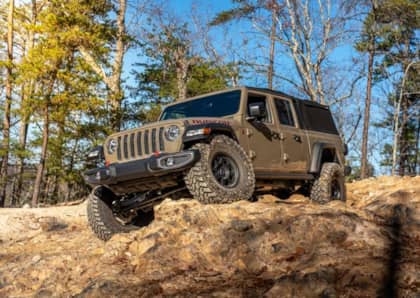Classic NASCAR Tech on the Streets: The Curious Case of the GM Aerocoupes
During the late-1960s and early-1970s, the American manufacturers participating in NASCAR engaged in a brief but visually exciting aero battle with each other on tracks across the country. The most famous champions in this struggle for downforce were the Dodge Charger Daytona and Plymouth Superbird twins, cars that were so quick that they were quickly banned by the powers that be—although not until the likes of the Mercury Cyclone Spoiler and the Ford Torino Talladega joined them on the grid with their less-flashy, but still intriguingly-altered sheet metal.
There was a second era of aero warfare, however, that's rarely seen the same intense spotlight shone on it. The first shots in this particular engagement were fired roughly a decade later, in the early '80s, when one automaker sought to challenge the box-like shape of existing NASCAR silhouettes in the pursuit of startling top speeds. It was warning shot that jolted a sleeping giant into an unusual response on both the track and the street.
Aero-What?
We're talking, of course, about the Aerocoupes, possibly the rarest version of the vaunted G-body platform that underpinned both the Chevrolet Monte Carlo and Pontiac Grand Prix that formed the leading edge of GM's NASCAR spear at the time.
Although the Monte Carlo and Grand Prix had both been redesigned for the 1978 model year in order to move to a svelter, shorter-wheelbase platform, a couple years later the styling mavens were at it again in a bid to modernize the look of each G-body coupe, while also making it somewhat more slippery when moving down the road.

In 1983, however, Ford showed up at Daytona with an all-new version of its Thunderbird that traded the 90-degree angles of its predecessor for flowing sheet metal that shed wind like a duck's feathers in a pond. It was the beginning of a spectacular run for the Blue Oval in the 1980s, and for driver Bill Elliott in particular, whose team won its way to a championship before the decade was out, something Ford hadn't done in almost 20 years. Most importantly, it signaled the death of the square shape as the de facto NASCAR template.
Bubble Innovation
General Motors was put in a tight spot by the Aerobird (as it was soon known), and while Chevrolet managed to keep stacking up NASCAR manufacturers championships under the points system (which favored the Chevy-heavy field), Ford was collecting wins and pole positions at a remarkable rate. This sent the teams campaigning Monte Carlos and Grand Prixs to Detroit with pitchforks and torches demanding that the General do something—anything—about the advantage enjoyed by the Thunderbird.

Unwilling to commit to a full redesign of the G-body, Chevrolet and Pontiac pooled their resources to create a sort of aero-Band-Aid that could be applied to the existing cars. Their solution? Graft a bubble-shaped piece of glass to the trailing edge of the roof in order to transform the 'notchback' trunk into a shape that more closely resembled a hatchback (if you squinted really hard).
It was an unusual move, although not without some precedent: Chevrolet had previously experimented with rear bubble glass on the also-boxy Chevrolet Caprice coupe. Despite the resemblance, the 25-degree angle glass on the G-body was all-new.

In competition the effect was modest, but helpful, cutting drag by nearly three percent and adding almost five miles per hour to the top end of the Monte Carlo and GP. Although Ford would continue to take checkers after the "Aerocoupes" were introduced in 1986, Chevrolet retained a comfortable presence in the winner's circle, too.
Hen's Teeth
On the street, both the Chevrolet Monte Carlo SS Aerocoupe and the Pontiac Grand Prix Aerocoupe were a little more awkward-looking than their NASCAR compatriots. They were also exceedingly rare cars. Racing regulations demanded 200 production models in showrooms if you wanted to put a vehicle on the track, and so that's exactly how many Chevrolet built for 1986. With another 6,052 churned out the following year, it made for fewer than 6,500 examples over its brief 24-month lifespan. The Pontiac was even less common, with only 1,118 made for the 1986 model year.

Aside from their trick rear glass, Aerocoupes are also identifiable by their unique spoiler on the trunk as well as a smoother front clip as compared to the standard notch design. Power was derived from a 305 ci V8 good for 180hp, matched with a four-sped automatic transmission.

Affordable History
A surprising number of Aerocoupes survive today, but seeing one out on the road is still an event. Prices have remained relatively affordable—few are collecting the G-body, which helps keep a lid on the market for '80s Monte Carlos and Grand Prixs in general—but expect to pay a premium for a very clean Aerocoupe should you stumble upon one while searching for a piece of rare NASCAR trivia. Still, even if you have to pay a bit extra to get into the driver's seat of one of these second-generation aero-war veterans, you can feel good about the fact you'll still be handing over a fraction of the asking price for anything with a wing towering over the rear deck.







